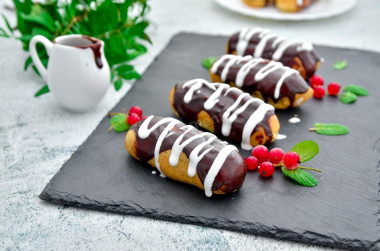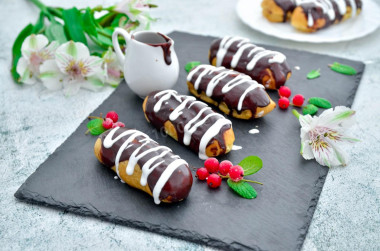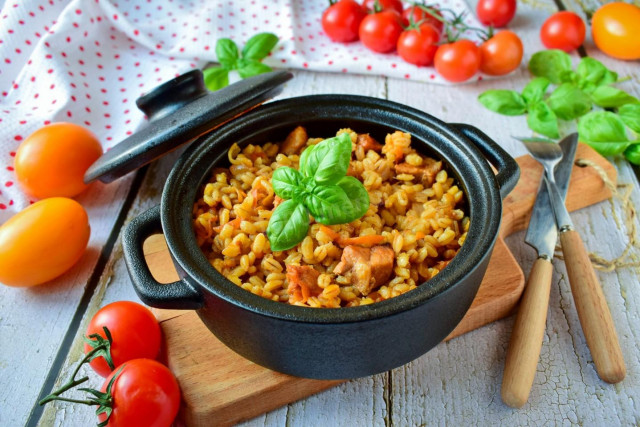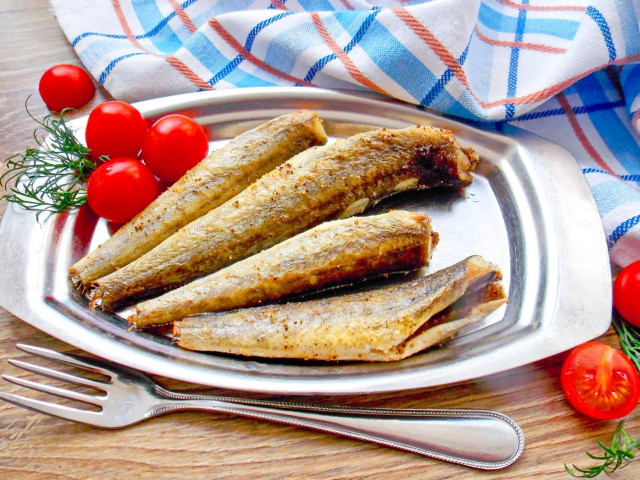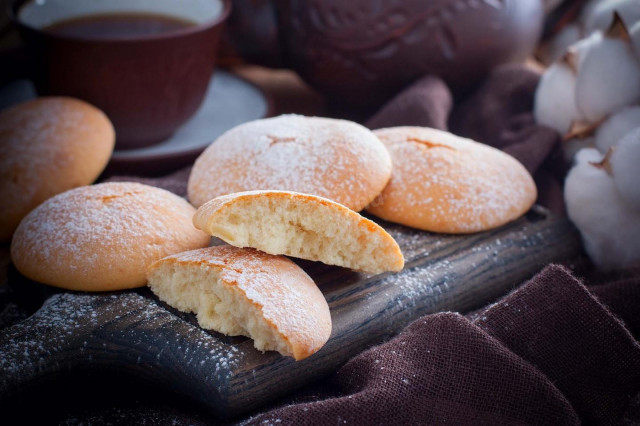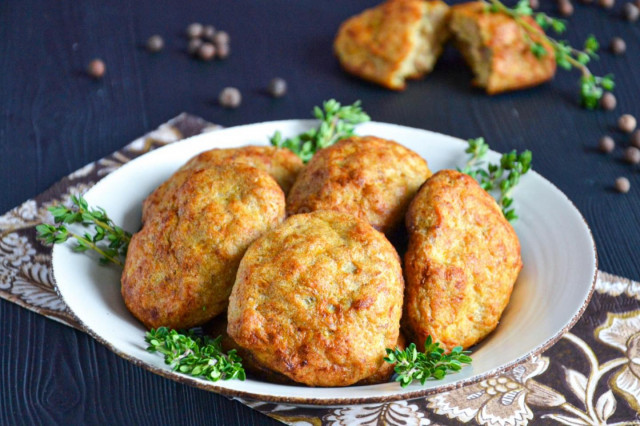Composition / ingredients
Step-by-step cooking
Step 1:
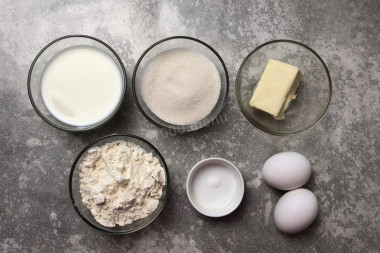
How to make custard cakes with custard? Let's start cooking with the cream, as it will take time to cool down. Prepare the products. Remove the butter from the refrigerator in advance so that it becomes soft.
Step 2:
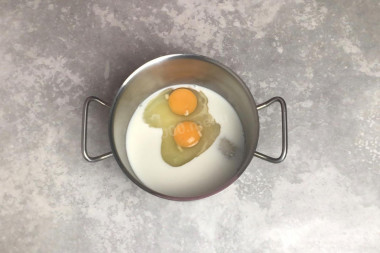
Take a saucepan with a thick bottom so that the cream does not stick when cooking. Pour 150 ml of milk into it, pour sugar, break eggs. Mix the ingredients with a whisk.
Step 3:

Add flour and vanilla, mix until the lumps disappear.
Step 4:
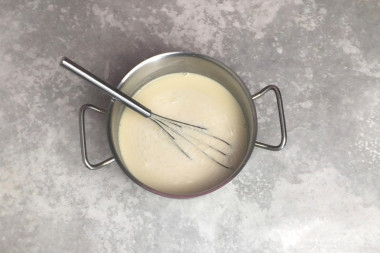
In a separate bowl, boil the remaining 500 ml of milk. Pour the hot milk into the egg mixture in a thin stream, stirring actively with a whisk.
Step 5:
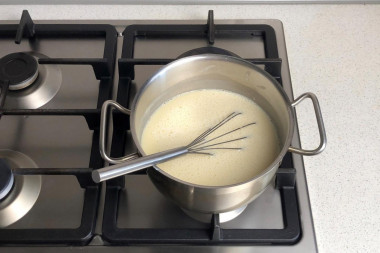
Put the pan on a small fire. Cook the mixture with constant stirring. Eggs can curdle and the cream will turn into an omelet, so it is important to stir the cream all the time.
Step 6:
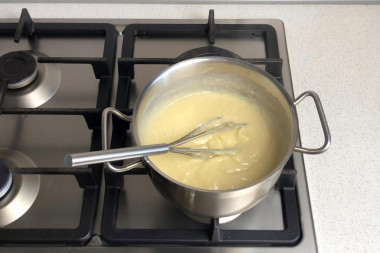
Cook the cream for about 10-15 minutes until thick. Determine the exact time by your plate. The corolla will begin to leave deep marks on the surface. Remove the cream from the heat and leave it for a while to cool down a little.
Step 7:
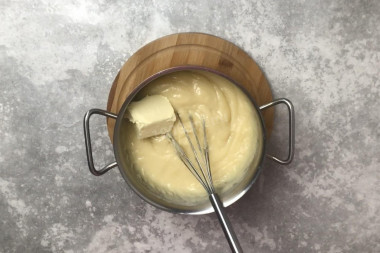
Put soft butter in a warm cream.
Step 8:
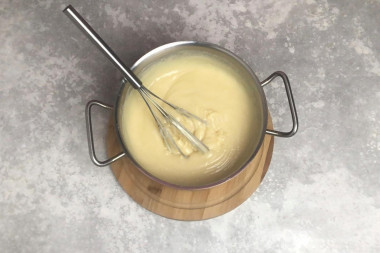
Mix the custard base with butter until smooth and homogeneous.
Step 9:
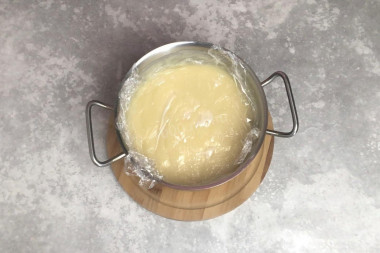
Cover the pan with the cream with cling film butt-to-butt, that is, so that the film lies on its surface. This will prevent the formation of a crust. Leave the cream to cool.
Step 10:
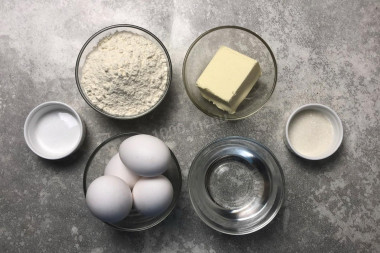
While the cream is cooling, prepare the dough. Prepare the products for him. Eggs can leave a different amount, from 3 to 5. It will be necessary to look at the consistency of the dough. The same goes for flour.
Step 11:
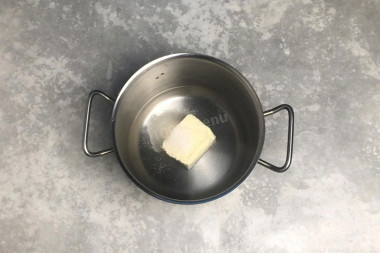
Take a pot with a thick bottom. Pour water into it, put butter, sugar and salt.
Step 12:
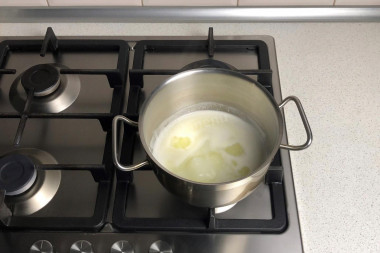
Put the pan on a low heat. Melt the butter and bring the mixture to a boil.
Step 13:
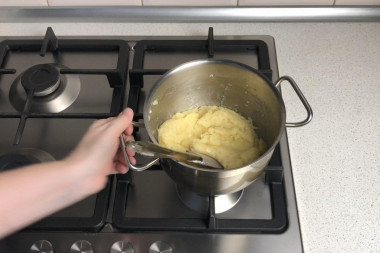
Pour the flour into the pan without removing it from the heat. Actively stir the mixture so that the flour mixes well with the liquid. Brew the dough for a couple of minutes with constant stirring. When a velvety sediment appears on the bottom, remove the pan from the heat.
Step 14:

Cool the dough a little. Start hammering eggs into it one at a time. I worked with a mixer, but you can stir with a regular spatula. After each egg, stir the mixture well until smooth.
Step 15:
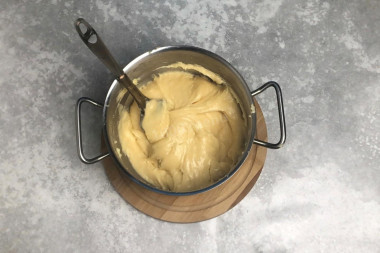
After the third egg, evaluate the condition of the dough. If it is creamy and drains from the shoulder blade, then do not add the fourth egg. If it's still thick, pour it in, but not the whole, but half. It is necessary to achieve the fluidity of the test. Therefore, the number of eggs varies, from 3 to 5. It took me 4 eggs of the zero category.
Step 16:

Put the dough in a pastry bag. Cover the baking sheet with parchment or a silicone mat. Place the cakes on the mat in the form of tubes, leaving a distance between them, as they will grow in size. Using a fork, give the tubes the desired shape.
Step 17:

Bake the cakes in the oven at about 200 ° C for 10 minutes, then reduce the heat to 180 ° C and bake them for about 30-35 minutes until golden brown. Determine the exact time and temperature of baking according to your oven. Remove the finished cakes from the baking sheet and cool completely.
Step 18:
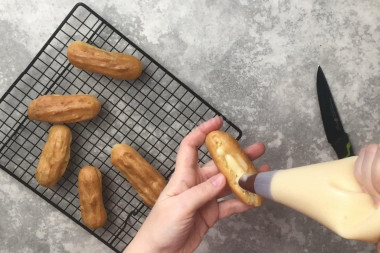
Transfer the cooled cream to a pastry bag. Cut each cake on the side and stuff with cream from the bag. You can squeeze the cream into them without a cut, piercing the bottom in several places.
Step 19:
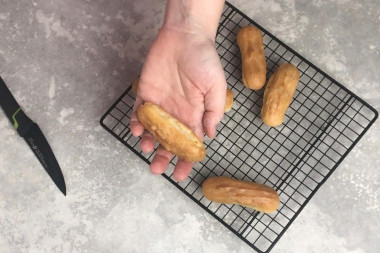
You can decorate the finished cake according to your taste. I covered them with chocolate icing. From this number of products, I got 30 small eclairs.
Be prepared for the fact that flour may need more or less than indicated in the recipe. Focus not on the amount of flour, but on the desired consistency of the dough. To avoid mistakes, read about flour and its properties!
Keep in mind that everyone's ovens are different. The temperature and cooking time may differ from those specified in the recipe. To make any baked dish successful, use the useful information about the features of ovens !
Caloric content of the products possible in the composition of the dish
- Whole cow's milk - 68 kcal/100g
- Milk 3.5% fat content - 64 kcal/100g
- Milk 3.2% fat content - 60 kcal/100g
- Milk 1.5% fat content - 47 kcal/100g
- Concentrated milk 7.5% fat content - 140 kcal/100g
- Milk 2.5% fat content - 54 kcal/100g
- Chicken egg - 157 kcal/100g
- Egg white - 45 kcal/100g
- Egg powder - 542 kcal/100g
- Egg yolk - 352 kcal/100g
- Ostrich egg - 118 kcal/100g
- Whole durum wheat flour fortified - 333 kcal/100g
- Whole durum wheat flour, universal - 364 kcal/100g
- Flour krupchatka - 348 kcal/100g
- Flour - 325 kcal/100g
- Granulated sugar - 398 kcal/100g
- Sugar - 398 kcal/100g
- Butter 82% - 734 kcal/100g
- Amateur unsalted butter - 709 kcal/100g
- Unsalted peasant butter - 661 kcal/100g
- Peasant salted butter - 652 kcal/100g
- Melted butter - 869 kcal/100g
- Salt - 0 kcal/100g
- Water - 0 kcal/100g
- Vanillin - 288 kcal/100g


